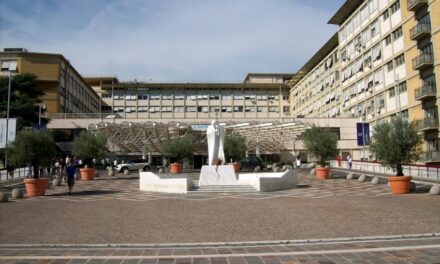On July 24, Saint Kinga of Árpád-házi is commemorated by the Catholic Church and the Hungarian-Polish community. The Hungarian princess was born in Esztergom on March 5, 1224, IV. As the first child of King Béla and Mária Laszkarisz. Sister of Saint Margaret and Blessed John, patron saint of Poland and Lithuania.
Kinga was characterized by deep religiosity from childhood, took a vow of virginity at a young age and dedicated her life to God. In 1239, the Polish prince Boleslav asked the fifteen-year-old Kinga to marry him. The young Polish queen was accompanied by a bright triumphal procession from Esztergom to Krakow. At her request, her royal husband respected his vow of virginity, and even took a vow of chastity himself, they lived in a so-called St. Joseph marriage .
The following can be read in the writings about his life: "After visiting his earthly parents, returning to Poland, Kinga - thanks to the generosity of his parents - took many gold things with him. Out of burning love for his heavenly Betrothed, he used them to decorate churches and monasteries, as well as to help orphans, widows and the poor. Under divine inspiration, he believed that it would be best to found a monastery for nuns and, provided with appropriate donations, collect virgins living according to the Franciscan rule from the order of St. Francis of Assisi - as he had been attracted to this order since childhood. Having founded the earthly temple and monastery, Kinga also sought to build another temple, which belongs to the Lord alone."
In 1249, he visited Hungary to ask his father for help for the destitute Polish people. That's when he received the Máramaros salt mine as a gift. He opened the famous Bochnia salt mines (Wieliczka) in 1251. On March 2, 1257, King Boleslav, showing his gratitude for his wife's country-building activities, granted her the province of Szandec, south of Krakow, in a deed, where the said Poor Clare founded the monastery.
In 1279, after forty years of marriage, she buried her husband, after which she requested admission to the Poor Clares. From then on, he dedicated his life to God, although the Poles asked him to take over the government of the country. The Poor Clares chose her as their superior in 1284, and she was the abbess of the Ószandec monastery until her death. In 1287, she again fled to the Csorsztin rock castle from a Tatar invasion, together with her fellow sisters.
The besiegers were defeated by the brave György Simonfia Baksa and a handful of Hungarian troops during a night raid. The monastery in Sandec was razed to the ground by the Tatars, and Kinga, at the age of 63, had to manage the reconstruction work.
In the fall of 1291, he began to fall ill, and in July 1292, his condition became critical. He died on July 24, 1292, Saint James the Apostle Even at the time of his death, an enemy invasion disturbed the life of the monastery, Czech troops ran amok in the area. In their fear of them, the sisters hid the news of their boss's death for three days.
VIII. Pope Alexander beatified him in 1690. Five years later, XII. Ince made him one of the patron saints of Poland. II. Pope John Paul II canonized him on June 16, 1999.
Kornélia Berényi's full article can be read on the Felvidék.ma news portal.
(Cover image: kozterkep.hu)












